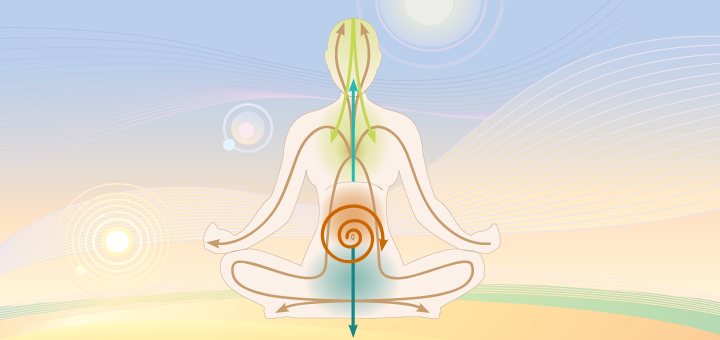From intake to impact: How energy flow shapes our health and vitality

In 1977, the scientist Ilya Prigogine won the Nobel Prize in Chemistry for his development of the theory of dissipative structures. This theory explains how complex systems that are far from equilibrium (like living organisms, weather patterns, or chemical reactions) can spontaneously form stable, organized structures or patterns without being directed by an external force. These structures “dissipate” energy, meaning they maintain themselves through continuous energy flow by taking energy in from the environment, transforming it internally, and then returning it back into the environment. The theory of dissipative structures can also be applied to understand human beings as open, self-organizing systems that constantly exchange energy and matter with their environment, leading to complex, dynamic behaviors.
In simpler terms, a human being is an open system that takes in energy from the environment, transforms and organizes it, and then releases it, impacting the surroundings. Yogis have been talking about this process for centuries. It’s beautifully captured in the Pancha Vayu Model, which describes the flow of energy into, throughout, and out of the body.
If you consider your daily functioning, you’ll notice a predictable pattern:
- Intake: You take in energy by consuming food, water, air, information, and sensory experiences.
- Transformation: You process this intake through digestion, gas exchange in the lungs, and the central nervous system that processes sensations and information.
- Absorption: Your body absorbs nutrients or knowledge from this processing, which power the cells and facilitate learning.
- Elimination: You eliminate what you don’t need through excretion and letting go of some experiences.
- Growth and Impact: As a result, you grow and release your energy into the world around you, impacting it through your work, creativity, touch, care, and many other forms.
Each step is guided by a particular current of prana (life energy), called Vayus. Yogis taught that for optimal health and functioning, this energy must flow unimpeded along each Vayu.

When the flow of energy along one or more Vayus is interrupted, it disrupts the entire system’s energy balance and can eventually lead to health problems. Energy distortions can take many forms, such as:
- Excessive energy intake: For example, consuming too much food or being overwhelmed by sensory input can cause a clogging in the system, leading to sluggishness or overload.
- Insufficient energy intake: Not consuming enough nutrients from food or lacking emotional support can lead to undernourishment or energetic depletion, making it difficult to thrive.
- Weak “digestive fire”: This refers to the inability to properly process food, experiences, or emotions, causing difficulties in digestion and assimilation.
- Malabsorption: The inability to absorb nutrients or learn from experiences, leading to deficiencies or stagnation in growth.
- Leaky vessel: When too much energy is being drained from the system, it can lead to depletion and exhaustion.
- Clogged vessel: When energy isn’t being properly released or expelled, it causes a build-up of waste and stagnation, which affects overall well-being.
- Excessive output: Too much energy being actively released into the environment or other people can manifest as overpowering or exploitative behavior.
- Weak output: Too little energy being released into the environment can manifest as inability to focus and direct your energy, to express yourself, or to leave a meaningful impact on the world.
In all these cases, the key is finding balance—ensuring energy flows in, through, and out of the system smoothly, without excess or deficiency, for optimal health and functioning. Identifying and addressing energy imbalances in a timely manner can help restore the body’s proper functioning and prevent many chronic diseases.
The root of many issues mentioned above often lies in problematic INTAKE, as everything we consume literally becomes part of us. The energy we derive from food, water, air, and everything that enters our bodies through our eyes, ears, noses, mouths, and skin is what nourishes us and keeps our inner engines running. That’s why the quantity and quality of what we consume is so crucial. What are you taking in regularly? Is it nourishing, or is it junk? Next week, we’ll take a closer look at consumption—stay tuned!










